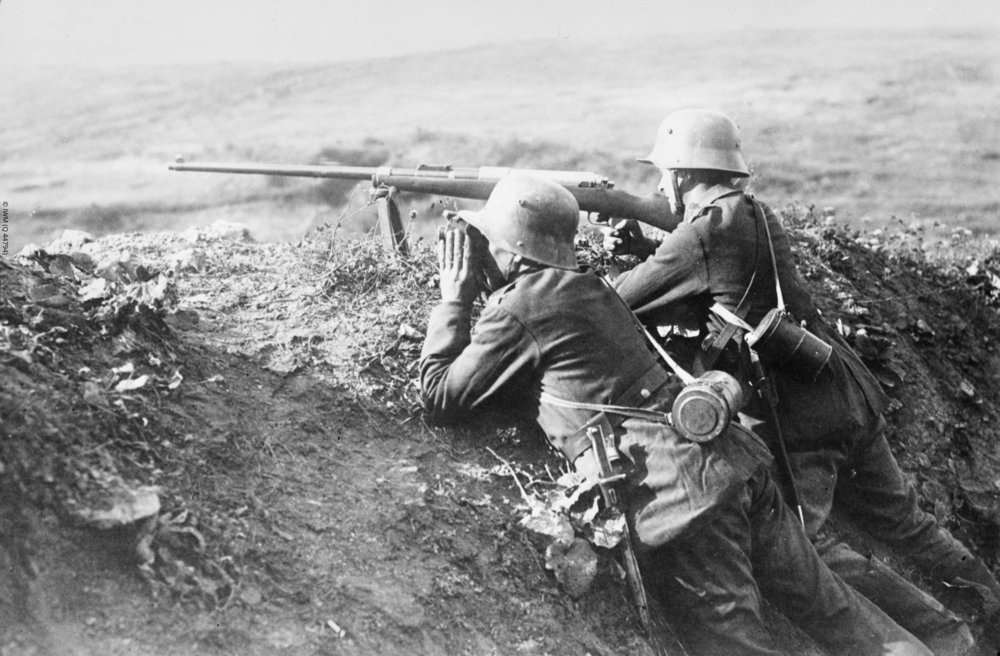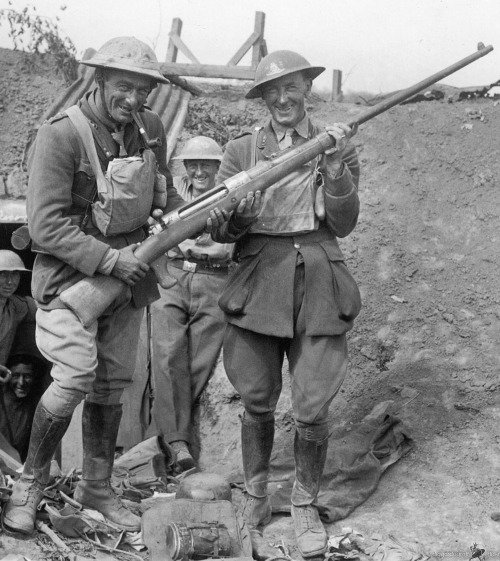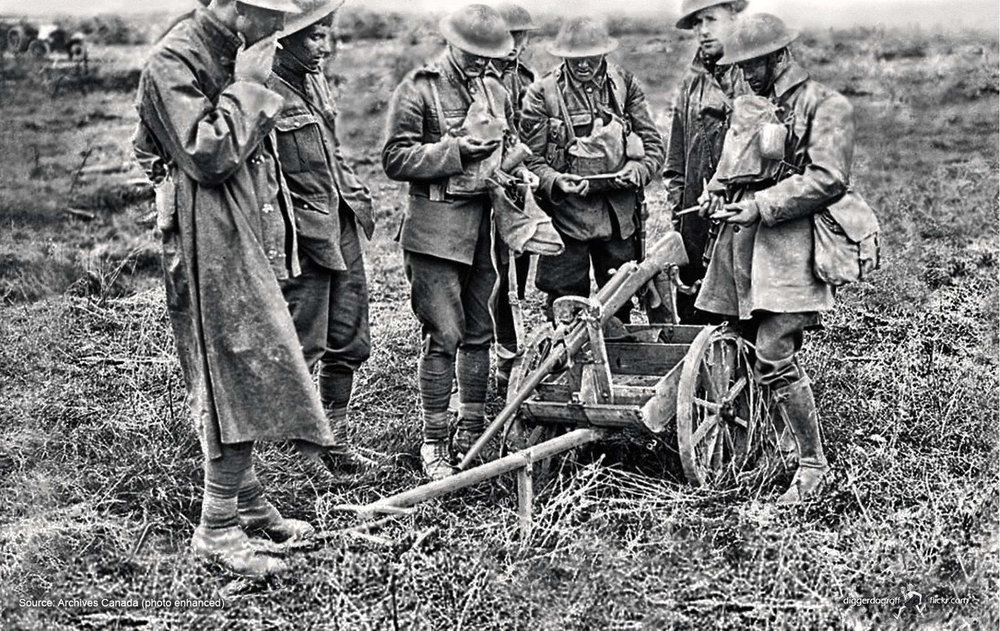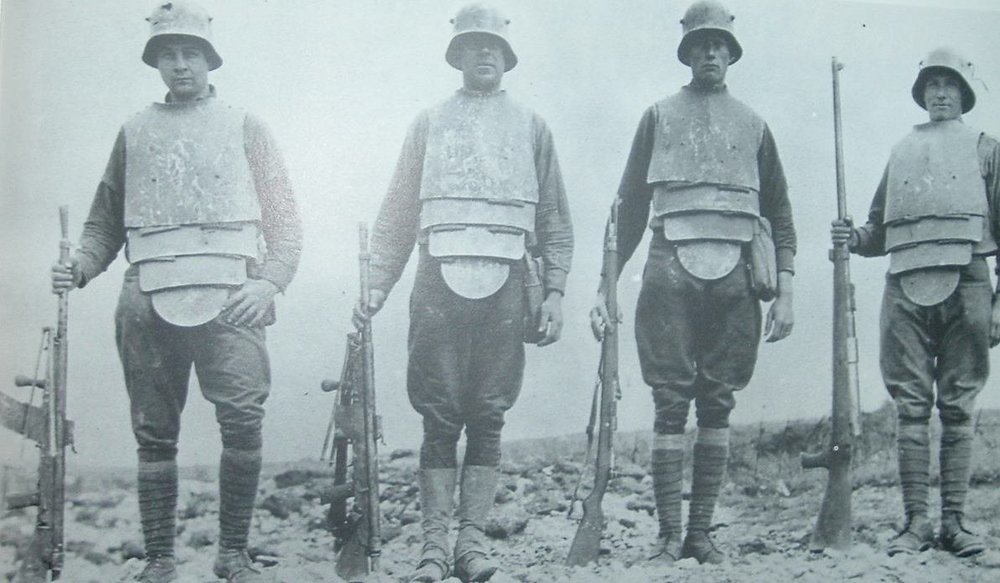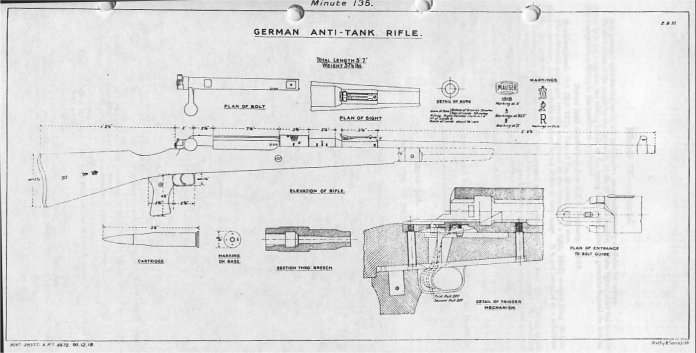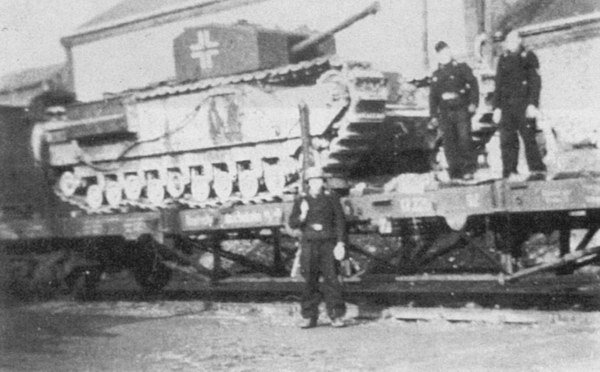Leaderboard
Popular Content
Showing content with the highest reputation on 05/12/19 in all areas
-
In WW1 the Germans were taken by surprise by the arrival of the tank, and were for a short time at a loss on how to take them out efficiently, artillery could do the trick, however since Germany virtually had no tanks of her own, if these could be disabled or the crews taken out, then they could be used for her forces, or as scrap metal for the war effort. The Germans were using the 7.92 "K" bullets which were armor piercing for a while to penetrate static armor plates for snipers and early tanks, but as the allies increased the armor thickness of the tanks this bullet was no longer effective against the tanks. So another solution was needed, the Mauser Company responded with the 13.2mm Tank Gewehr and began mass production at Oberndorf am Neckar in May 1918. Now at this point in history the Germans were not using the word "Panzer" for tanks, they simply used the allies name. The rifle itself was single shot bolt action rifle similar to the G98 model in action, just scaled up tremendously with some modifications such as 4 locking lugs on the bolt. The stock was fitted with a pistol grip as the rifle could not be fired in the manner of the smaller caliber rifles, simply due to the size. The rifle also had a detachable bipod, which helped stabilize the gun for firing. The bipod was traversable and could go in a complete circle. Early models of the bipod were tubular in nature, however most encountered today are the type used on the Mg 08/15, this modification simplified production as well. The gun had iron sights that went out to 500 meters, and was typically operated by a 2 man team, a gunner and the ammo carrier/spotter. The rifle had no sling attachments or a sling in general, it was simply carried over the shoulder in some fashion to were it did not wear out the shooter too much, but was mainly meant to be static. The rifle was 169.1 cm long and weighed 18.5 kg with the bipod, so it was not easy to get around. Roughly, about 16,000 were made during the war. The gun fired an armor-piercing hardened steel cored 13.2 x 92mm (.525-inch) semi-rimmed cartridge, often simply called "13 mm". This gun was a stop gap measure, as this round was originally planned for a new, heavy Maxim MG.18 water-cooled machine gun, the Tank und Flieger (TuF) meaning for use against "tank and aircraft", which was under development and to be fielded in 1919. The rounds weighed 51.5 g (795 gm) with an initial velocity of 785 m/s (2,580 ft/s). The ammo could penetrate 22 mm of armor plate at 100 meters. This particular rifle is dated 1918, serial number 868, all matching parts. The barrel and parts of the receiver have the remains of white speckled paint which was used to help conceal the weapon as it was captured in a pillbox and brought back to the US by a member of company "L", 23rd Engineer Regiment. The 23rd Engineers began arriving in France of November 1917 and participated in the Saint Mihiel and the Meuse-Argonne offensives. This unit was also heavily involved in the post war clean up, involving repair and recovery of weapons, gear and equipment, and left in mid 1919. The rifle had the stock cut in two to facilitate ease of shipment home then was reassembled. Also included are some contemporary photos of the gun, the last one shows it mounted in a sponson of a tank.1 point
-
There would be several possibilities for medical personnel attached to a Feldlazarett. This would include various ranks of physicians, medical orderlies - Krankenwärter (nurses), Sanitätsunteroffiziere, Etappen Sanitäts Kolonne with Freiwilliger Krankenpflege. Krankenwärter wore dark blue shoulder straps with a medium blue piping and yellow Arabic corps number. M1915. Krankenträger wore Karmasinrot (carmine) colored shoulder straps with no piping and yellow Arabic company number. M1907-M1915. Doctors, Assistenzarzt and above, had a dark blue velvet underlay on their boards, Unterarzt had a dark blue board. Freiwilliger Krankenpflege had their own system of shoulder board ranks, as they were volunteer medical personnel and not part of the army medical service.1 point
-
Most people have heard of the Memphis Belle, maybe not it's pilot so much, Robert Morgan. The Memphis Belle gained fame in WW2 by being the first US bomber in England to complete 25 missions and return the US. The Memphis Belle, a Boeing-built B-17F-10-BO, manufacturer's serial number 3470, USAAC (United States Army Air Corps) Serial No. 41-24485, was added to the USAAF inventory on 15 July 1942, and delivered in September 1942 to the 91st Bombardment Group at Dow Field, Bangor, Maine. She deployed to Prestwick, Scotland, on 30 September 1942, moving to a temporary base at RAF Kimbolton on 1 October, and then finally to her permanent base at RAF Bassingbourn, England, on 14 October. Each side of the fuselage bore the unit and aircraft identification markings of a B-17 of the 324th Bomb Squadron (Heavy); the squadron code "DF" and individual aircraft letter "A." Morgans crew flew a total of 29 missions, however on 25 were flown in the Belle. in which they were credited with 8 enemy aircraft shot down. Upon the return to the US, the Belle and her crew embarked on a war bonds drive to help fund the war. Afterwards, Morgan, newly promoted to Major, went on to command the 869th Bomb Squadron in the Pacific Theater. He flew the B-29 name "Dauntless Dotty" named after his third wife Dorothy. On November 24, 1944, he led the first mission of the XXI Bomber Command to bomb Japan, 110 aircraft of the 73rd Bomb Wing to Tokyo, with wing commander Brigadier General Emmett O'Donnell, Jr. as co-pilot. He completed 26 missions over Japan until being sent home on April 24, 1945. Interestingly enough, after handing over the B-29 to a new crew, the "Dotty" crashed 40 seconds after take off, slamming into the ocean, killing 10 of its 13 crew. The three that survived were thrown from the craft upon impact and spent nearly an hour in the water before being rescued. After the war, Morgan continued to fly in the Air Force Reserves, and eventually retired a full Colonel in 1965. At least 10 US aircraft have since carried the name "Memphis Belle" or some derivative. After spending decades sitting outside, the Belle was starting to deteriorate, however in 2003 was disassembled and taken to a storage facility to begin its long restoration. In May of 2017, work was completed and the plane was put on display at various museums. It now resides at the US Air Force museum in Dayton, Ohio. Robert Morgan also wrote an autobiography of his exoperices, it is very honest and brutal, but a very good read. It is titled: The Man Who Flew the Memphis Belle: Memoir of a WWII Bomber Pilot. Below is an autograph I got when I met him at a military show in Dallas Texas in the mid 1990's.1 point
-
Yes, of course the number of mission required to go home only increased as the war dragged on. Unfortunately for the Germans numbers and raw materials were not in their side.1 point
-
That was the difference to the German side of the story. The Americans could be withdrawn after the said 25 missions etc. On the German side it was different, you had to fly or fight till you fell, there were also no more replacements coming from home.1 point
-
1 point
-
1 point
-
1 point
-
1 point
-
The shoulder loops (Laschen) for the Bluse were authorized in 1917. These loops do appear on Blusen dated 1916. It is unknown how this would happen other than these loops would have been added to unissued tunics on hand in the Bekleidungsämter.1 point
-
1 point






